#paul winter consort
Explore tagged Tumblr posts
Text
Exploring the Musical Mastery of Ralph Towner
Introduction: Ralph Towner is a name synonymous with innovation and virtuosity in the world of contemporary jazz and classical guitar. Born eighty-four years ago today on March 1, 1940, in Chehalis, Washington, Towner’s musical journey began at a young age. His unique approach to composition and improvisation, coupled with his mastery of the 12-string guitar, has made him a revered figure among…

View On WordPress
#Bill Evans#Bill Frisell#Collin Walcott#Consort#Glen Moore#Homer Keller#Jazz Guitarists#Jazz History#Karl Scheit#Nels Cline#Oregon#Pat Metheny#Paul McCandless#Paul Winter#Ralph Towner#Solstice
3 notes
·
View notes
Text

Some ideas for legends the Polos have passed down about the Bestower of Voice
(Disclaimer: None of these are actual speculations about the Real Paul)
-to avoid the hassle of calling him "Bestower of Voice" all the time, most Polos just call him Voice.
-"Voice" can be seen as a metaphor for Life. Once the Designer and Constructor have done their jobs it is the BoV's responsibility to bring their creations to life.
-in addition to Music, Song, and Dance the BoV also has providence over Sea/Water, Sky/Air, the Winter season, Love, Sex, Wine, and General Revelry. Think Dionysus with elements of Zeus, Poseidon, Aphrodite, and Ceres/Demeter.
-He's slow to anger, but said anger, when provoked, is swift and final.
-the most common punishment for slighting the BoV is having your voice taken away, either permanently or until you show him you've changed. This phenomenon is referred to as "Muting" or being Muted. The belief in Muting extends to anytime someone loses their voice, even if they're only sick or spent a long period of time straining it. You'll hear Polos saying "La Voix te pardonne"("Voice forgive you") as often as we say "Bless you".
-He's the most worldly of the gods, befriending mortals, feasting with them, and even occasionally pursuing them romantically(before he met his consort, who was indeed a mortal, but was allowed to become immortal).
9 notes
·
View notes
Text
Muse List
[Updated 01/15/2025]

Canon & OC Superhero/Spy/Marvel/DC-Based:
Harley Quinn circa the Harley Quinn cartoon, The Suicide Squad, and Birds of Prey —> FC: Ma.rgot Ro.bbie Clark Kent circa My Adventures With Superman —> FC: H.enry Ca.vill [Agath.a Hark.ness — MCU / Marvel-616] —> FC: Kathry.n Hah.n & Helen Mirre.n [Lady D.eath — MCU/Marvel 616] FC: A.ubrey Pl.aza
[Illya Kuryakin - Canon Divergent from The Man From Uncle 2015 with heavy MCU/616 influences]
[James “Bucky” Barnes - MCU + 616 Mix]
[Arina Bondar- MCU/616 + TMFU (2015) OC]
[Adeliana Bondar-Kuryakin - MCU/616 + TMFU (2015) OC] [Atom Eve — Am.azon Pri.me’s Invincible]
Fantasy & Mythology-Based OCs:
[Farah - The Tower]
[Jane - High Priestess]
[Rosie - The Empress]
[Relta - Temperance]
[Aislin - Death] —> @reginamortuorum / @reginapeccatorum
[Keife - The Hanged Man] Disney/Fairytale: 1. Hercules (Hercules 1997) —> Sa.m Heu.gan & Hen.ry Ca.vill fcs 2. Flynn Rider (Tangled 2010) —> Seb.astian St.an 3. Dmitri (Anastasia 1997) —> De.rek K.lena 5. Prince Adam de Valois (BATB 1991 & Historical influences) 6. Grand Duchess Anastasia (Anastasia 1997) 7. King Consort Kristoff (Frozen 2013) — Aaron Taylor-Johnson 8. Prince Hans (Frozen 2013) — Ruairi O’Connor 9. Queen Briar Rose / Aurora (Sleeping Beauty) — Saoirse Ronan 10. Kronk (The Emperor’s New Groove) — Xolo Maridueña 11. Queen Belle (BATB 1991) — Emily Bader 12. Queen Elinor (Brave & Fate Be Changed) — Emily Bader & Catrina Balfe
History/Mythology/HOTD/ASOIAF/Medieval or Ancient Eras Based:
[Catherine of Aragon’s Muse Bio & Verses]
[Mary I’s Muse Bio & Verses]
[Relta’s historical verses] * [Prince Alastair] * —> @monarchofthedamned / @princeofbrokenhearts [Lady/Princess Madeline] *
[Lady Marguerite of Gisborne — BBC’S Robin Hood / Sherwood OC]*
[Maid Marian of Knighton — BBC’s Robin Hood / Sherwood by Meghan Spooner] * [Lady Jane Grey — Amazon’s My Lady Jane] * [Lady Zenobia — Demigoddess OC]* [Chloe de Soilel — Demigoddess OC]* * = modern verses available
TV Show & Movie Canon Based:
[Hetty — CBS’s Ghosts]
[Flower — CBS’s Ghosts]
[Thorfinn (“Thor”) — CBS’s Ghosts]
[Sir Guy of Gisborne — BBC’s Robin Hood, Canon Divergent] [Shego — Disney’s Kim Possible, Canon Divergent/Headcanon Based]
Greek Mythology:
Queen Hera — Simone Ashley
Queen Persephone — [Spring/Summer] & [Fall/Winter]
King Hades — Keanu Reeves
Lady Aphrodite — Keke Palmer [Spring/Summer] & Keira Knightley [Fall/Winter]
King Zeus — Jonathan Bailey & Paul Hollywood
Lord Ares — Fabian Frankel & Jon Bernthal
Norse Mythology:
Freyja — Freya Mavor
9 notes
·
View notes
Text
The Winds
Greek myth post 🎉
It all started with Astraeus and Eos.
Astraeus is a confusing figure in Greek myth, sometimes a minor deity, sometimes a giant (he probably was not a giant, for the record); according to Hesiod's Theogany, he's the son of the Titan Crius and Goddess Eurybia.
Eos is the personified Goddess of the Dawn, daughter of the sibling Titans Theia and Hyperion, children of Gaia. According to some sources, Eos was cursed by Aphrodite with an insatiable lust for mortal men. Regardless of where her lust originated, it definitely existed, and she had many lovers Eos' siblings were Helios, personified God of the Sun and Selene, personified Goddess of the Moon.
Eos and Astraeus' children were the Anemoi (the winds), and potentially a daughter, Astraea. You have Eos to thank for the stars in the night sky, too.

BOREAS - The North Wind
Eos (1895) — Evelyn De Morgan
The Anemoi
Oftentimes considered the God of winter, storms and generally just chilly weather, Boreas represents the North wind. He is strong and violent, with a quick temper.
In one myth, he takes the form of a stallion and fathers twelve colts to the mares of King Erichthonius of Dardania. Very Loki-core of him.
Boreas was said to live in Thrace. If you don't know where that is, it's north of Greece, between Turkey and northeast Greece. Because the Greeks were very intelligent and under the impression that the top of the Mediterranean was the top of the world itself, they named his home 'Hyperborea' ("Beyond the North Wind", a name that is technically accurate thanks to it's vagueness). Hyperborea was thought to be a place of bliss and peace.
Boreas is most well-known for his abduction of the Athenian Princess Orithyia, daughter of Erechtheus. Orithyia was hanging out with her ladies-in-waiting by the Ilisos River, after having rejected Boreas' advances numerous times, and (true to his temperamental nature) he abducted her.
Orithyia was later made into a Goddess of cold mountain winds. And she bore Boreas two daughters, Chione and Cleopatra, and two sons, Zetes and Calaïs. The two sons are known as the Boreads, were Giant priests of Apollo, and would later accompany the Argonauts on their journey to the Golden Fleece.
We have, unfortunately, lost Aeschylus' play Oreithyia.
Athenians considered Boreas a relative by marriage, and would pray to him in times of hardship. One story tells of Athenians praying to Boreas when threatened by Xerxes, to which he sunk 400 Persian ships to save them.

The Rape of Orithyia by Boreas (1620) — Peter Paul Rubens
ZEPHYRUS - The West Wind
The bringer of Spring and the most gentle of the four winds. Besides Boreas, Zephyrus is one of the less limited of the minor Greek deities.
Zephyrus become the consort of Iris, Goddess of the Rainbow, to whom he father Pothos, the God of Desire (Alcaeus of Mytilene writes that the couple also became parents to Eros, who is more commonly thought to be Aphrodite and Ares' son).
Zephyrus also fathered Balius and Xanthus, those two talking horses that were gifted to Achilles. Although Iris was not the mother, rather her sister, the Harpy Podarge. It is implied that this took place while he was in horse-form (I sense a recurring theme).
It has also been considered that Zephyrus fathered yet another talking horse, Arion, to a different horse-mother. Although Arion's parents are widely accepted to be Poseidon and Demeter.
It was thought by the Greeks that Zephyrus lived with his brother, Boreas. In the Odyssey, it appears that they all live with Aeolus, keeper of the winds. In the Dionysiaca, all four winds live together with their father, Astraeus.
In the Iliad, Zephyrus is visited by his wife, Iris, as he and his brothers are in his home. She wishes for him and Boreas to blow on Patroclus' funeral pyre, since Achilles prayed for their help when it failed to light.
In the myth of Eros and Psyche, Zephyrus transports Psyche to Eros'palace, and, later, reluctantly transports Psyche's sisters to visit her by Psyche's wishes.
In his most notable myth, Zephyrus falls deeply in love with the Spartan Prince, Hyacinthus, who rejected him and became a lover of Apollo instead. One day, during a game of Frisbee B.C.-Edition, Zephyrus directed Apollo's throw to his Hyacinthus' head, fatally wounding him. (In some versions of the myth, Hyacinthus' death had nothing to do with Zephyrus, and Apollo's aim is just garbage).

Zéphyr et Flore c. 1715 — Sebastiano Ricci
NOTUS - The South Wind
Though of as a wind of heat, late summer/early autumn, mist and rain, Notus, unlike his brothers, has little mythology of his own.
He has no known consorts, lovers or children, and is hardly mentioned, even in passing. However, his name shows itself in texts like the Iliad and the Odyssey.
The Bronze Age was, in mythology, brought about by a great flood incurred by Zeus after a displeasing Arcadian sacrifice. Zeus locked away the rest of the winds and set Notus loose to cause rain and flooding across the Earth, drowning almost everyone.
Notus, along with his brother, the South wind, are responsible for stranding Odysseus on Thrinacia, the island of Helios, for a solid month.
His abode is thought to be somewhere off the coast of North Africa. One interpretation suggests Aethiopeia, south of the Sahara, as the location of his palace.
Notus features in the satirical work of Dialogues of the Sea Gods by Lucian of Samosata. He and Zephyrus discuss the Argive Princess Io and her Zeus-induced plight. When Zephyrus describes the abduction of Europa with glee at having seen such a marvel, Notus quips that he is disappointed at this abduction, since it was nothing of note.
EURUS - The East Wind
Eurus is featured in myth even less so than Notus, appearing almost entirely with his other brothers at his side. Often, he is omitted from the quartet entirely.
Eurus is the only one among the four who ceases to be mentioned by Hesiod, who names "Argestes" as the fourth wind. On addition, he has no Orphic hymn in his honor (unlike the others).
Nonnus, a fifth century author from Panopolis, made Eurus one of the four winds in his Dionysiaca.
Like Notus, he has no known consorts, livers or children.
In the Pergamon Altar, depicting the Gigantomachy, Eurus is with the other winds pulling Hera's chariot.
4 notes
·
View notes
Text
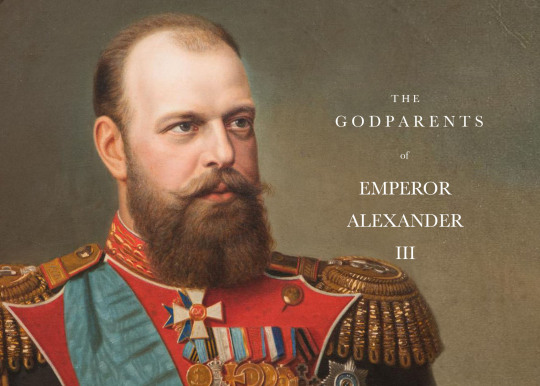

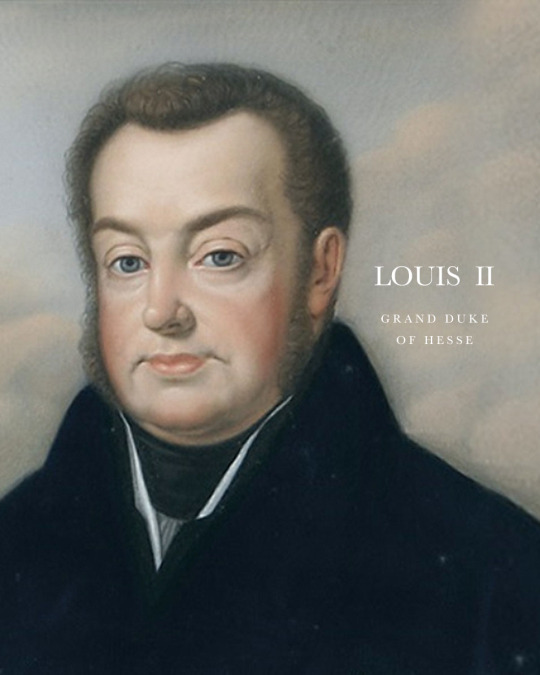

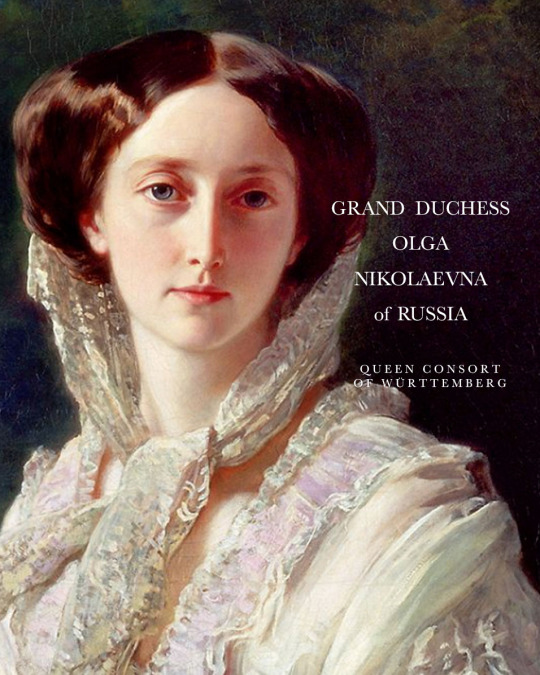
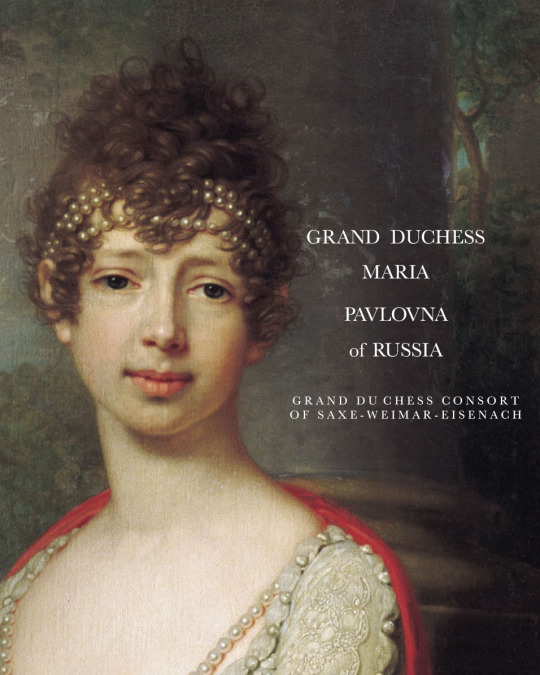

GODPARENTS OF EMPEROR ALEXANDER III
Emperor Alexander III (then Grand Duke) was born as the second son of Emperor Alexander II (then Tsesarevich) on 10 March 1845, during the reign of his grandfather Emperor Nicholas I. He was christened a week later at 10 am in the Winter Palace Church, St. Petersburg, by the Confessor of Their Imperial Highnesses. He had six listed godparents:
NICHOLAS I, EMPEROR OF RUSSIA - his paternal grandfather was one of his godparents present at his christening. Mainly remembered in history as a reactionary whose controversial reign was marked by geographical expansion, centralisation of administrative policies and repression of dissent. He died in 1855, when the Alexander was only 9 years-old, just a week shy from his 10th birthday.
LOUIS II, GRAND DUKE OF HESSE AND BY RHINE - his maternal grandfather was another of his godparents, but was absent at the christening. The hessian grand duke, like his paternal grandfather, was also considered a reactionary leader, he was in conflict with parliament almost his entire reign. The German revolution in 1848-49 proved his inability to govern. On March 5, 1848 he named his son Louis III as co-regent, and a year later he died.
GRAND DUCHESS ELENA PAVLOVNA OF RUSSIA - his great-aunt, the wife of Grand Duke Michael Pavlovich, stood as one of his godparents. Born as Princess Charlotte of Württemberg, she became a close friend of Alexander's mother the Empress Maria Alexandrovna, and was known as an intellectual. She was also considered the most exceptional woman in the imperial family since Catherine the Great.
GRAND DUCHESS OLGA NIKOLAEVNA OF RUSSIA, QUEEN CONSORT OF WÜRTTEMBERG - his aunt was one of his godparents present at the christening. She was the younger sister of his father. Attractive, cultured and intelligent, she was considered to be one of the most eligible princesses in Europe. Just three years after her nephew was born, in 1846, she married Crown Prince Karl of Württemberg. Alexander's older brother the heir apparent Nicholas died just two months before their aunt Queen consort of Württemberg. With his death, he became the next heir apparent, the 'Tsesarevich'.
GRAND DUCHESS MARIA PAVLOVNA OF RUSSIA, GRAND DUCHESS CONSORT OF SAXE-WEIMAR-EISENACH - his great-aunt was another of his godparents. One of the daughters of Emperor Paul I, the grand duchess married a German prince Karl Friedrich, Grand Duke of Saxe-Weimar-Eisenach in 1804. She was an intellect, interested in both arts and sciences. German poet and novelist Johann Wolfgang von Goethe hailed her as one of the worthiest women of his time. She was the great-grandmother of Wilhelm II, German Emperor and Queen Victoria of Sweden.
PRINCESS MATHILDE CAROLINE OF BAVARIA, GRAND DUCHESS OF HESSE AND BY RHINE - his aunt, the wife of his uncle Louis III, Grand Duke of Hesse and by Rhine, was listed as one of the future emperor's godparents. She was the eldest daughter of King Ludwig I of Bavaria. Her marriage to Louis III was childless. She died of cancer in 1862 at the age of 48.
Source
37 notes
·
View notes
Text
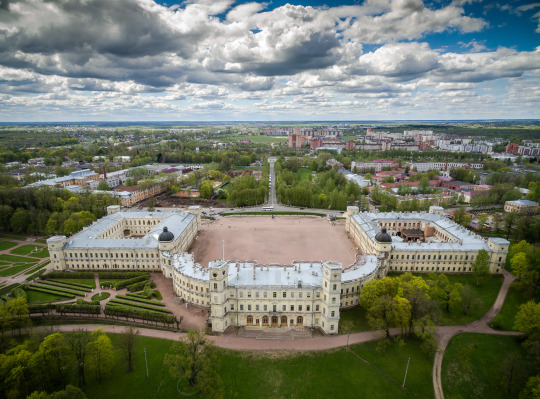


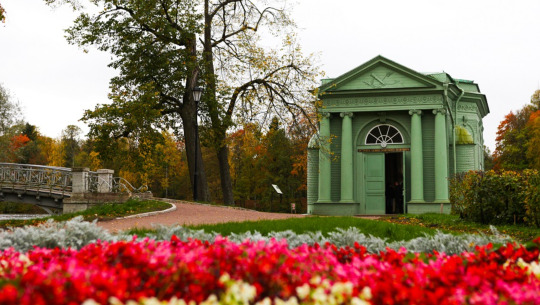

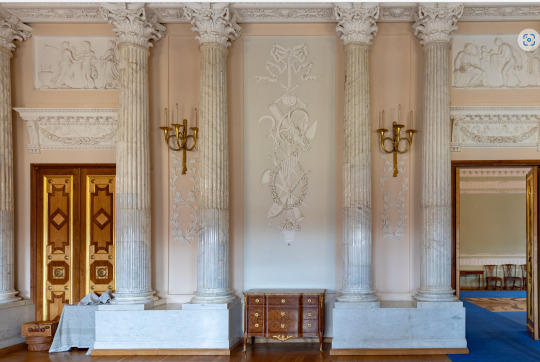
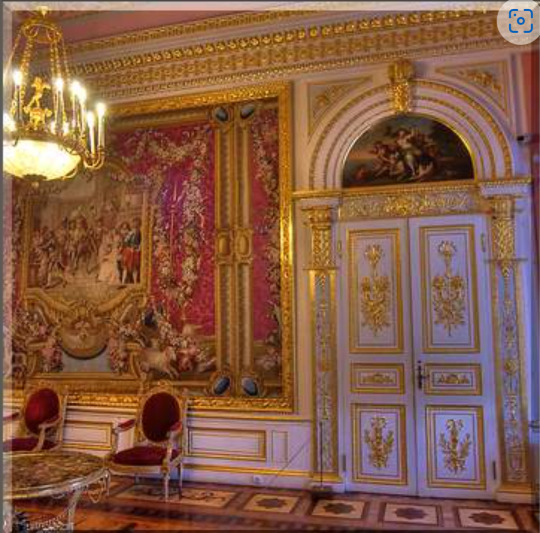
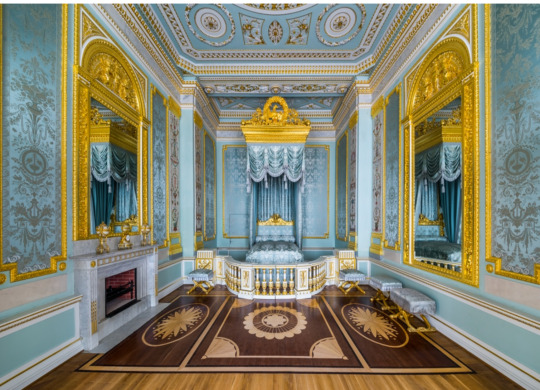




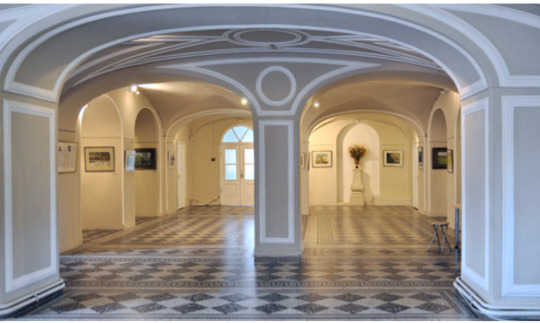
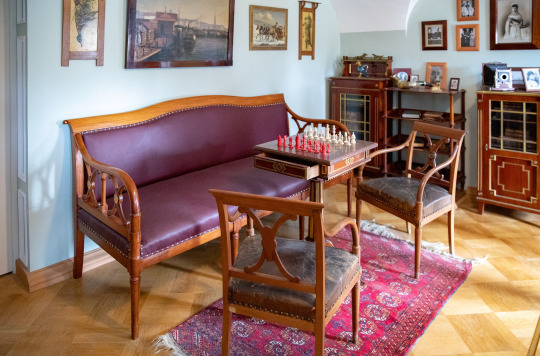

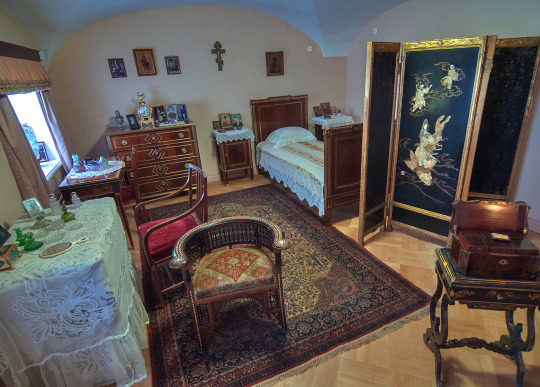
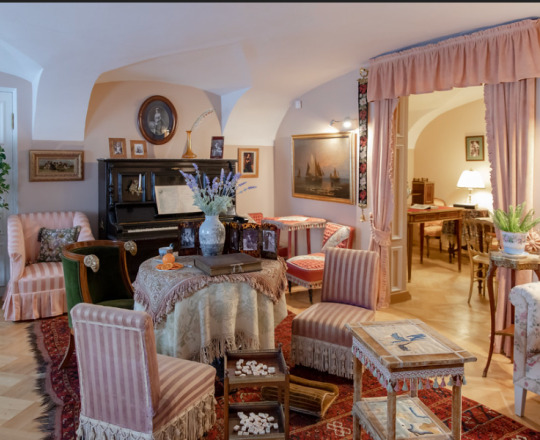
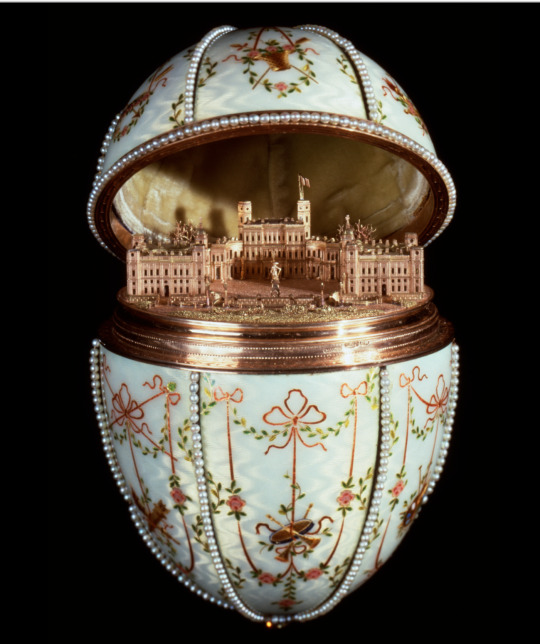
Gatchina Palace
The House Where Nicholas II Grew Up.
Gatchina Palace, located about twenty-five miles from Saint Petersburg, was built by Catherine the Great for her favorite, Count Grigory Orlov. When Orlov died, Catherine bought the estate from his heirs and gave it to her son Paul. Gatchina would go on to become Paul's favorite residence. He arranged everything to his taste.
When Paul died, the Romanovs continued to use Gatchina. Nicholas I and his consort loved to hunt and relax at Gatchina. Alexander II liked to conduct state affairs while hunting at Gatchina. After the assassination of his father, his advisors told Alexander III that he would be safer at Gatchina than at the Winter Palace. Alexander III spent most of his life at Gatchina Palace. He signed decrees and held diplomatic receptions, theatrical performances, masquerades, costumed balls, and other events and entertainment. Alexander III introduced technological modernizations new to Russia at the Gatchina Palace, such as indoor heaters, electric lights, a telephone network, non-freezing water pipes, and a modern sewage system. His children, including the future Tsar Nicholas II, spent their youth at Gatchina Palace.
Alexander III and his family stayed in the Arsenal Wing; they did not inhabit the luxurious spaces used for official business; the rooms they used for daily life had low ceilings and were small. In December 1844, after the Court had spent two long autumn months in the Gatchina Palace, the Emperor signed a decree ordering to rebuild the Kitchen Wing. Reconstruction of the Arsenal Wing began in 1846.
Gatchina became famous for its paintings, sculptures, furniture, and fine china collection. Gatchina lost a large part of its treasure during the revolution and another part when the palace was looted and badly damaged by the Nazis during WWII. Restoration work on the palace's interiors continues to this day.
28 notes
·
View notes
Text

Paul Winter And Winter Consort – Something in the Wind
This is the second album of Paul’s that we’re pulling “from the vault” in the barn here at Living Music HQ. Something in the Wind, released on A&M in 1969, is the second album recorded by The Winter Consort. It’s a further exploration of their unique blend of classical and jazz backgrounds while still exploring the folk and pop sensibilities of the time. Within the span of side A alone you’ll hear one of Bach’s Cantatas, a version of Mr. Bojangles, and a unique arrangement of a composition by Charles Ives…
3 notes
·
View notes
Text
George Martin's best album
By his own assessment, Icarus by Paul Winter and the Winter Consort, recorded in 1971. It was partly recorded at a quiet house at Marblehead near Salem in Massachusetts that George Martin rented while working on several projects at the nearby Seaweed Studios, including Seatrain’s Marblehead Messenger album. Chosen as an intimate alternative to big New York and London studios, it nevertheless…
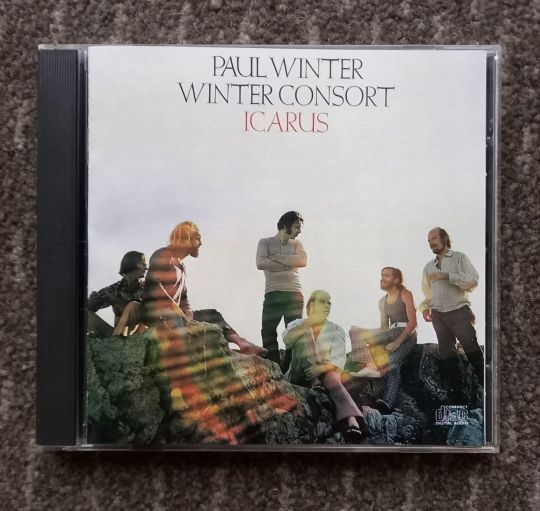
View On WordPress
0 notes
Text
REVIEW: The Makers Out “Bloodlines/Hope”
REVIEW: The Makers Out “Bloodlines/Hope” @themakersout @americanahighways #americanahighways #Johnapice #bloodlineshope #americanamusic #newmusic2024 #musicreviews
The Makers Out – Bloodlines/Hope This debut is described as a musical landscape; cinematic & visionary but more World Music/New Age. Closer in the realm of Tim Story (“The Seventh Chance”), Paul Winter Consort (“Common Ground”) or Michael Hoenig (“Departure From the Northern Wasteland”). The music is conveyed in an ethereal pleasantness & what sets it apart from others are the vocals that are…

View On WordPress
0 notes
Text
youtube
Fun fact: when I was a teenager, I actually considered learning to play the sitar, and more than half the reason was because of having my eyes opened by Collin Walcott to what the instrument could do in a jazz—or, well, post-jazz?—setting.
Unfortunately, Walcott passed on at the age of 39 in a bus accident while touring East Germany with Oregon, the band he formed with fellow members of the Paul Winter Consort. I wonder what music he might' ha've made if he'd survived that crash.
0 notes
Text
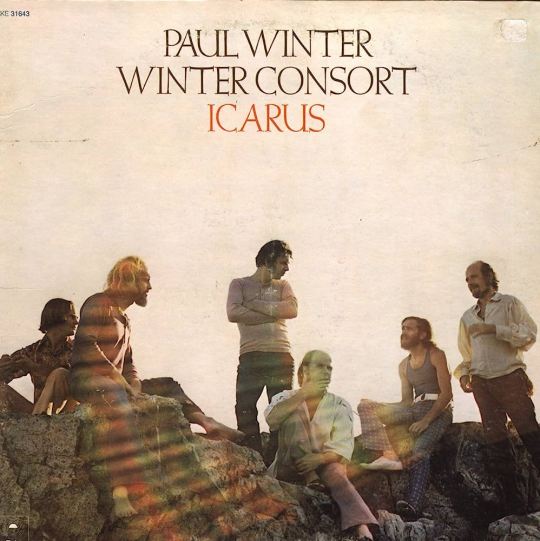
Ode to a Fillmore Dressing Room - Paul Winter Consort
listen: https://www.youtube.com/watch?v=ea_rZ5-t2S0&list=OLAK5uy_lZXbFuMd0cL7CgWVduF0t8X9v7KPBxohA&index=2
1 note
·
View note
Text
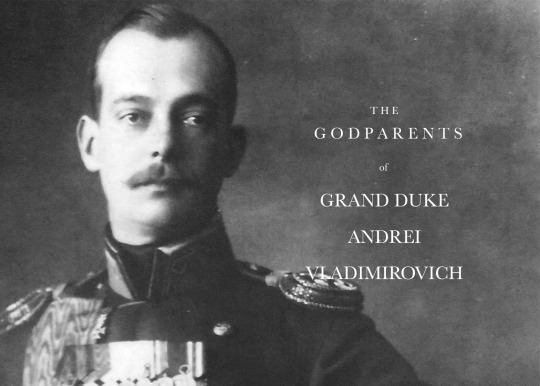
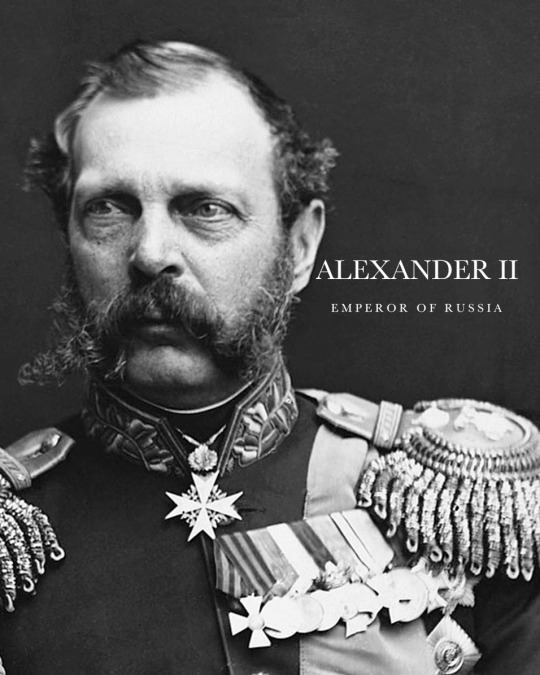
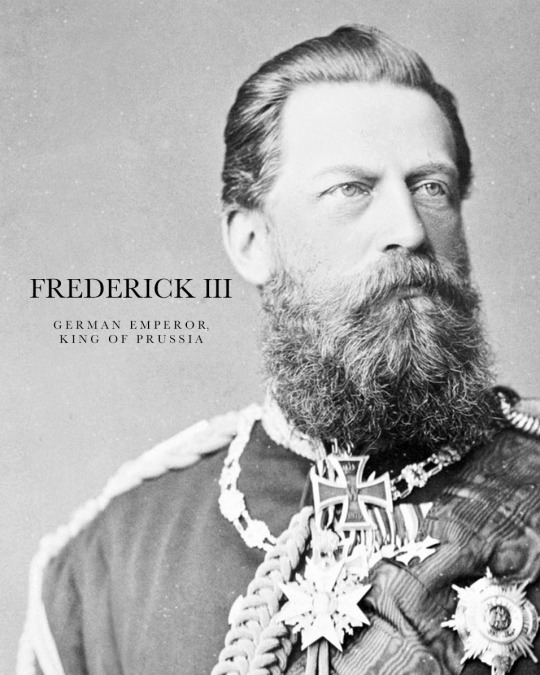
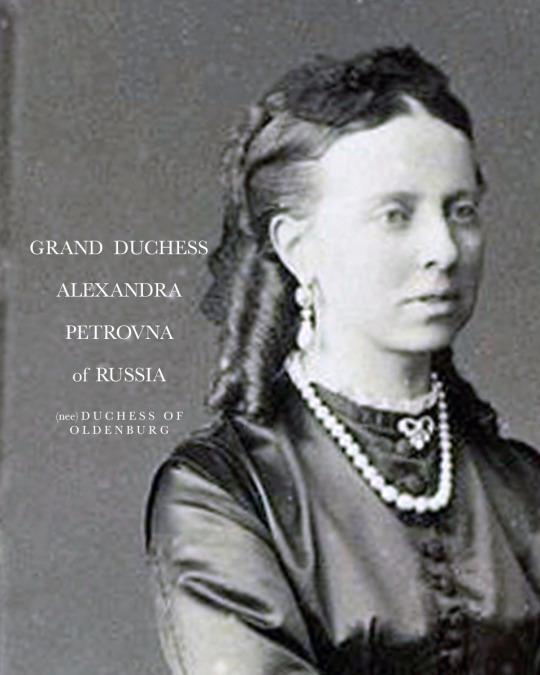
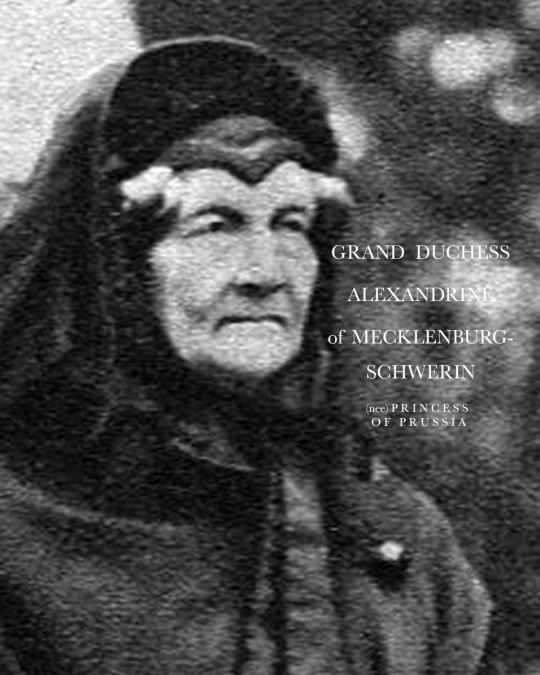
GODPARENTS OF GRAND DUKE ANDREI VLADIMIROVICH
Grand Duke Andrei Vladimirovich was born on 14 May 1879 at his parents country residence, the Vladimir Villa in Tsarskoe Selo, Saint Petersburg. He was the third surviving son of Grand Duke Vladimir Alexandrovich of Russia and his German-born wife Grand Duchess Maria Pavlova (the Elder/née Duchess of Mecklenburg-Schwerin). He was christened on 24 June at the Winter Palace by the Confessor of Their Imperial Majesties. His godparents were:
ALEXANDER II, EMPEROR OF RUSSIA - the Russian Emperor, his paternal grandfather, was one of his godparents. Alexander’s most significant reform as emperor was the emancipation of Russia’s serfs in 1861, for which he is known as Alexander the Liberator. Grand Duke Andrei was only a year-old when his grandfather was assassinated.
FREDERICK III, GERMAN EMPEROR AND KING OF PRUSSIA - then the Crown Prince, he was named as one of the godparents of the young grand duke. A first cousin of Andrei's grandfather, he became German Emperor and King of Prussia in 1888 for only 99 days.
GRAND DUCHESS ALEXANDRA PETROVNA OF RUSSIA - his great-aunt by marriage was another of Andrei's godparents. Also a Romanov by descent, she married the unpopular Grand Duke Nicholas Nikolaevich in 1856. Their marriage was an unhappy one, albeit sharing two sons. Known for her charity work, she later became a nun under the name Sister Anastasia.
ALEXANDRINE, GRAND DUCHESS OF MECKLENBURG-SCHWERIN - his maternal great-grandmother, a Prussian-born princess was another of his godparents. She was a sister of Empress Alexandra Feodorovna-consort of Nicholas I-who was also Andrei's great-grandmother on his father's side. In 1822, she married Paul Frederick, Hereditary Grand Duke of Mecklenburg-Schwerin (himself, a grandson of Tsar Paul). Their marriage was generally considered unhappy, he was a military man who had little time for or interest in his wife and family. Alexandrine, by contrast, was a devoted mother who tenderly raised her children and actively cultivated their cultural pursuits.
Source
6 notes
·
View notes
Audio

1 note
·
View note
Link
ポール・ウィンター (1980) Callings. コーリングス from my house.
すべてに親切
クジラを救う
#Paul Winter#Paul Winter Consort#Callings#Whales#Whale Music#New Age Music#Save the Whales#Guitar#earthquakerdevices#Afterneath#Bellows#Tyler Sellers
2 notes
·
View notes
Video
youtube
If you like this, visit http://koramusic.net to see Alhaji Bai Konte's grandsons continuing the family tradition - the Great Gambian Griots kora duet videos - from the grandsons of Alhaji Bai Konteh! 16mm film by Oliver Franklin and Marc Pevar. "Alhaji Bai Konte," depicts a day-in-the-life of the now-deceased Gambian Mandinka kora virtuoso, Alhaji Bai Konte, shot on location in Brikama, Gambia (plus one scene in Dakar, Senegal), West Africa, and narrated by world-famous bluesman Taj Mahal. The film was co-produced by Oliver Franklin and Marc Pevar, and filmed by Harold Yates and Lenore French and edited by Rob Wallace. Alhaji Bai Konte's son, Dembo Konte, accompanies in the performance, and various family members and friends make cameo appearances. His wife, Nafi Kouyate, appears in the final scene, praying. Kora is a 21-stringed harp unique to the Mandinka, played by Griots who are oral historians as well as musicians. This group of Mandinka preserve and propagate genealogical and historical information through song and story, and are a source of immense pride and identity to the Mandinka people. Alhaji Bai Konte was the first griot to introduce the kora widely throughout North America, where he toured major folk, jazz and blues festivals, gave private concerts and mingled with many professional musicians. His tours continued for seven years in the 1970's, often accompanied by Dembo Konte and Malamini Jobarteh, whose excellent musical skills were also a delight to their audiences. Alhaji Bai Konte appeared on TV and radio many times, most famously on the PBS TV series Jump Street, narrated by Oscar Brown Jr., and also on a historic NPR radio show recorded in Vermont, where he shared the stage with Elizabeth Cotton and Taj Mahal. That radio show aired for many years, with these iconic musicians representing the roots from Africa, the adaptation of kora picking styles to guitar, and the synthesis of the two fused into the modern era. Both Elizabeth Cotton and Taj Mahal acknowledged that their music and instrumental techniques arose from the Kora, which Pete Seeger also credited as the source of blues and Jazz. Alhaji Bai Konte performed with many musicians including: Taj Mahal, Elizabeth Cotton, The Paul Winter Consort, Tony Bird, Pete Seeger, David Amram and many other musicians. Alhaji Bai Konte's performances and media appearances opened the door to the American music market for the kora musicians who followed in his footsteps, and opened the minds of many Americans and musicians world-wide to the classical beauty of the kora, Gambian musicianship, the Griot culture, and the sophistication if this musical tradition that extends in time back 800 years to the era of the Mali Empire. - Marc Pevar
6 notes
·
View notes